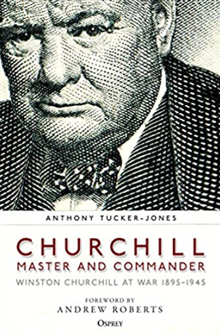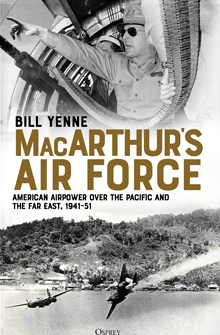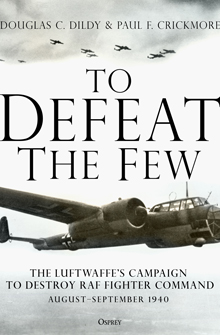From the Publisher
Osprey Publishing has been providing books for enthusiasts since 1968 and since then it has grown, evolved and taken on new challenges until it stands today as one of the most successful examples of niche publishing around.
It was originally owned by Berkshire Printing, part of Brooke Bond, the tea company. The company was formed to publish Aircam Aviation, its first series, the brainchild of Dick Ward, the leading aviation illustrator. The series grew out of his work on the collectable cards which were then packaged with Brooke Bond tea. The first Osprey book was published in 1969: Aircam Aviation Series.1: North American P-51D Mustang in USAAF-USAF Service. This set the Osprey style of illustrated information books combining detailed and authoritative text, colour and black & white artwork, and photographs in uniform series formats.
With the success of Aircam, Dick Ward proposed applying the same approach to famous military units. Philip Warner, a distinguished historian from the Royal Military Academy Sandhurst, was appointed series editor and Men-at-Arms came into being. The first title, Foot Grenadiers of the Imperial Guard, was published in 1971. The earliest titles (originally unnumbered) were regimental histories rather than the studies of uniforms and equipment that now characterise most of the Men-at-Arms series, but the focus on uniforms and equipment was strong from the beginning. Osprey quickly became recognised as a leading publisher for military history enthusiasts.
Early in 1972 Martin Windrow, already working on Men-at-Arms as a freelance editor, joined Osprey full-time. Over the next 17 years Martin built Osprey’s series publishing, notably taking Men-at-Arms to its 200th title, having contributed a number himself. Back in 1974, no-one, Martin included, had imagined such a future. In the second half of the 1970s Osprey was acquired by the George Philip Group, the map and atlas specialists. Vanguard, now updated as New Vanguard, was launched in 1978 with an initial focus on armoured units. Elite was launched in 1984 with The Paras 1940–84 and now comprises well over 100 titles. In 1987 Martin Windrow left Osprey, but he would be back. At this time, alongside the distinctive and rapidly growing military and aviation series, Osprey published information and reference books in many subject areas and built a significant automotive list.
The fourth of the series that still form the core of Osprey’s publishing today, Campaign, was launched in 1990; Campaign 1: Normandy 1944 has been reprinted many times and the series now numbers some 200 volumes. Warrior followed in 1993, the early titles including Norman Knight AD 950–1204 and Confederate Infantryman 1861–65. Warrior 100: Nelson’s Sailors was published for the centenary commemoration of the battle of Trafalgar. The first New Vanguard, Kingtiger Heavy Tank 1942–45, published in 1993. In 2001 the range of the series was expanded to cover all types of war machine from all eras, in addition to 20th and 21st century armoured fighting vehicles. Two recent titles, Tudor Warships: Henry VIII’s Navy and Sikorsky UH-60 Black Hawk demonstrate this new scope.
Tony Holmes, who had been aviation editor since 1989 and taken photographs and written for Osprey prior to that, developed Aircraft of the Aces, a worthy descendant of Aircam, and it was launched in 1994 with Mustang Aces of the Eighth Air Force, an echo of Osprey’s first title. Combat Aircraft followed soon afterwards in 1997; and titles such as US Navy F-14 Tomcat Units of Operation Iraqi Freedom bring the series into the 21st century. Aviation Elite Units added a new perspective to the list in 2000.
In 1998, Osprey became an independent company and moved from London to Oxford, leaving Reed International, latterly Reed Elsevier, who had owned George Philip since 1988. The decision was soon taken to focus exclusively on publishing on warfare and military history in the established series, which had for many years been the business’s trademark product. Martin Windrow rejoined as Series Editor of Men-at-Arms, once again working as a freelance. A completely new publishing team was built, steadily increasing the output of new titles and adding many new customers to the loyal band gathered over the past three decades.
More new series were created – Essential Histories launched in 2001, Fortress and Osprey Modelling in 2003 and Battle Orders in 2004. Fortress and Battle Orders are firmly in the Osprey series tradition of providing detailed verbal and visual information on major facets of the history of war as a reference for hobbyists, academics and other professionals, and for study for the pleasure and fascination of it (whether as a lifelong habit or to satisfy passing interest). This was quickly confirmed by the welcome given to the first titles in these two series, which included Hadrian’s Wall AD 122–410 and US Marine Corps Pacific Theater of Operations 1941–43. Osprey Modelling (following on from the Modelling Manuals series) is different from the rest in that it offers ‘how-to’ books catering for one significant group of hobbyists. By contrast, Essential Histories, a multi-volume world history of wars and warfare, has introduced Osprey to a wider audience but is also valued by established customers for the overviews it provides.
The Osprey General publishing programme was launched in 2003. It has the same objective as Essential Histories of reaching out to the non-specialist reader with an active or spontaneous interest in military history. Some titles weave together new material with previously-published Osprey text and illustrations, others are completely new.
At the end of 2004 Osprey moved into new offices in Oxford and New York, and Osprey Publishing Inc, its newly formed subsidiary, started trading in North America at the beginning of 2005.
In August 2007 Osprey made its first acquisition, in the shape of the enthusiast history, heritage and collectables publisher Shire. Also in 2007 another new series, Duel, was launched. With the strapline ‘Engage the Enemy’, the series provides accounts of machines of war pitted against each other and the combatants who operated them. Readers are invited to step onto the battlefield and immerse themselves in the experience of real historic combat through a combination of technical detail, first-hand accounts and superlative illustration. The first volumes in this series have outperformed all sales expectations and we have to work very hard to reprint in order to keep up with demand.
The company continues to flourish. Early in 2008 Osprey moved into another new phase of its life, entering the gaming arena by publishing Field of Glory in conjunction with Slitherine Software Ltd. The rules are rapidly becoming the standard in ancient and medieval miniature wargaming. The reception for this product has been staggering, with fantastic reviews across the gaming world. Its production and design values, a hallmark of Osprey’s publishing, have been particularly praised.
Martin Windrow remembers that in 1974 he ‘was wondering if Men-at-Arms might last another year’. Three decades later, well over 400 titles have been published in that series, and the whole Osprey list now totals nearly 1,500. The central mission is unchanged. Osprey will continue to bring together expert authors and illustrators and military-history enthusiasts by delivering the information readers need to increase their knowledge and to enrich their leisure or professional pursuits. Osprey’s enthusiasm for military history is balanced by an equal enthusiasm for excellent publishing.
We thank all our contributors for making Osprey possible, all our readers for their interest and support, all our partners for the work we have done together over the years and all our retailers and distributors for making sure the right books end up in the right hands. We are always pleased to receive comments and questions about our publishing and future plans, and to be informed of our customers’ needs and wishes.
Book Reviews

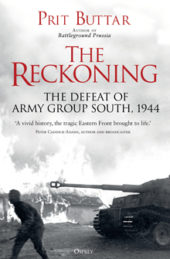










Articles






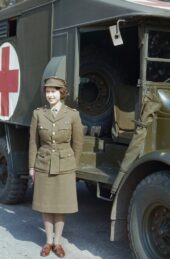





Interviews















